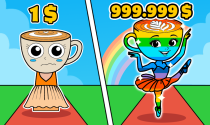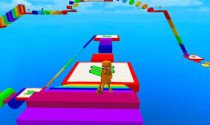KenKen
KenKen is a numerical puzzle game that was invented by Japanese mathematics teacher Tetsuya Miyamoto in 2004. The game is similar to Sudoku in that it...
Similar games
About KenKen
KenKen is a numerical puzzle game that was invented by Japanese mathematics teacher Tetsuya Miyamoto in 2004. The game is similar to Sudoku in that it requires players to fill a grid with numbers, but it adds a unique twist that makes it a more challenging and engaging experience.
In KenKen, players are presented with a grid that is divided into cages, which are groups of cells that are connected either horizontally or vertically. Each cage is labeled with a target number and an arithmetic operation (addition, subtraction, multiplication, or division). The player's goal is to fill in the grid with numbers that satisfy both the arithmetic operation and the target number for each cage.
For example, if a cage is labeled with the number 10 and the operation "+" (addition) consists of three cells, the player must fill those cells with numbers that add up to 10. Similarly, if a cage is labeled with the number 4 and the operation "x" (multiplication) consists of two cells, the player must fill those cells with numbers that multiply to 4.
The game becomes more challenging as the grid size increases and the number of cages and target numbers increases. Players must use logic and deduction to determine which numbers can go in each cell based on the constraints provided by the cages and the existing numbers in the grid.
KenKen has become a popular game worldwide and is often featured in puzzle magazines and newspapers. It has also been used as an educational tool to teach math concepts such as arithmetic operations, problem-solving, and logical reasoning.
KenKen is an enjoyable and stimulating game that provides a unique challenge for puzzle enthusiasts and math lovers alike.
How to play KenKen
Using Mouse






















